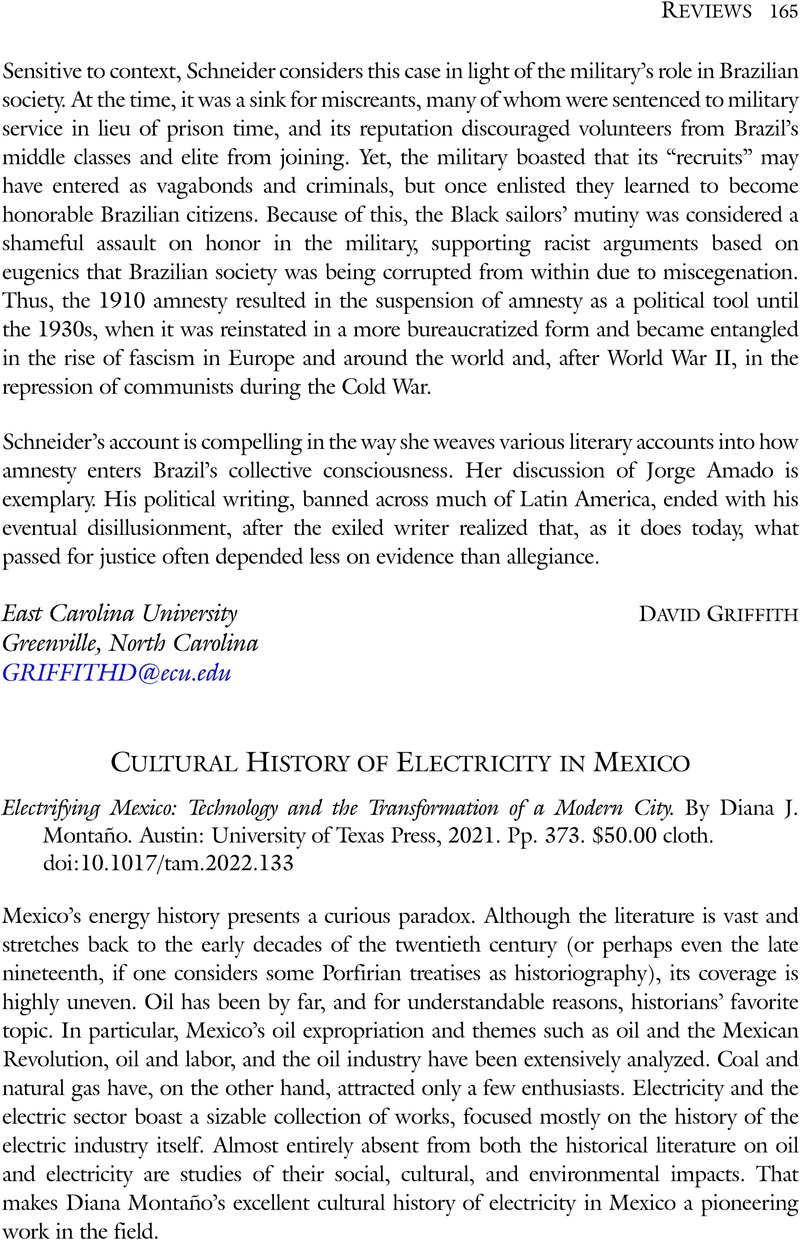No CrossRef data available.
Article contents
Cultural History of Electricity in Mexico - Electrifying Mexico: Technology and the Transformation of a Modern City. By Diana J. Montaño. Austin: University of Texas Press, 2021. Pp. 373. $50.00 cloth.
Review products
Electrifying Mexico: Technology and the Transformation of a Modern City. By Diana J. Montaño. Austin: University of Texas Press, 2021. Pp. 373. $50.00 cloth.
Published online by Cambridge University Press: 10 February 2023
Abstract
An abstract is not available for this content so a preview has been provided. Please use the Get access link above for information on how to access this content.

- Type
- Book Review
- Information
- Copyright
- Copyright © The Author(s), 2023. Published by Cambridge University Press on behalf of Academy of American Franciscan History


